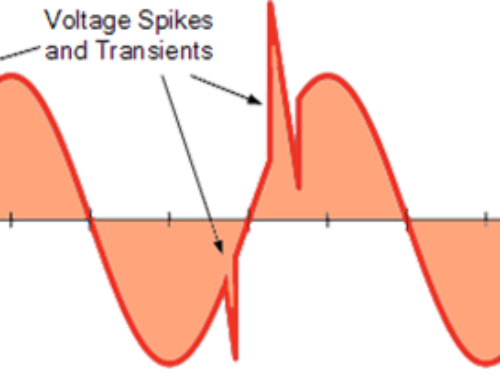Introduction: The Importance of Collecting Lightning Data
Lightning has long been a source of intrigue and debate. Despite what we have learned about lightning over the centuries, there is still more to learn. Scientists are exploring the role lightning plays in the dynamic forces of the Earth’s atmosphere. To better understand how lightning affects climate change, lightning has been added to the Global Climate Observing System’s list of Essential Climate Variables (ECVs). ECVs provide the empirical evidence needed to understand and predict the evolution of climate as well as to guide mitigation and adaptation measures in support of scientists, governments, agencies, and international climate policy.
The primary objectives of lightning studies include determining the relationship between the electrical characteristics of storms and precipitation, convection, and severe weather. Lightning data can be used to protect people, assets, and operations from the risks of direct and indirect lightning strikes. Knowing when and where lightning may strike can help determine risk factors for forest fires, damages to electrical infrastructure, when to issue related air traffic advisories, and weather services can generate severe storm and heavy precipitation warnings.
Lightning Data Research & Application Areas
- Topography
- Land & Ocean
- Seasonal Cycle
- Diurnal Cycle
- Semiannual
- Intraseasonal
- Annual
- Decadal
- El Nino Southern
- Oscillation (ENSO) Cycle
- Global Electric Circuit
- Lightning Physics
- Lightning Mapping
- Lightning Behavior
- Lightning Discharge
- Modeling
- Lightning Simulations
- 3d Lightning Simulations
- Storm Structure & Interaction
- Cloud Processes
- Atmospheric Chemistry
- Aerosol Interactions
- Fire Weather Management
- Weather Forecasting
- Lightning Safety
- Weather Predictions.
- Nighttime Lightning Detection,
- Lightning Discharge Observations
- Electric Field Measurements
- Lightning Detection
- Algorithm Development.
NASA’s Lightning Image Sensor: A Space-based Lightning Detective
While there are numerous ground-based instruments providing lightning data, they all use triangulation to determine the flash location. In addition, cloud-to-cloud lightning is often rejected because only two of the three required locations are detected for triangulation. Thus, cloud-to-cloud lightning is often underestimated. In addition, ground sensors can only detect activity over land. On the other hand, space-based lightning detection systems use direct observation and can detect cloud-to-ground, cloud-to-cloud, and intracloud lightning. A space-based sensor can also provide calibration and validation to ground-based lightning networks. Its only drawback is that the data is not available in real-time.
The Lightning Imaging Sensor (LIS) is an example of a space-based sensor. It was first launched November 1997 aboard NASA’s Tropical Rainfall Measuring Mission (TRMM) satellite and operated until April 2015 when its mission ended. The 17-year mission was so successful that the spare LIS module, which was in storage, was sent to the International Space Station (ISS) in 2017 to take advantage of the laboratory’s high inclination. From this vantage point, the sensor will be able to look farther towards Earth’s poles than the original LIS aboard the TRMM.
LIS measures the amount, rate, and radiant energy of global lightning, providing storm-scale resolution, millisecond timing, and high, uniform-detection efficiency; and, it does this without land-ocean bias. While on the TRMM observatory it travelled 7 kilometers every second, or 16,000 miles per hour, and was able to view a point or cloud on Earth for almost 90 seconds. Despite the brief duration, it was long enough to estimate the flashing rate of most storms. The TRMM LIS detection efficiency ranged from 69% near noon to 88% at night. The sensor provides valuable information on data-sparse regions, such as oceans.
“Only LIS globally detects all in-cloud and cloud-to-ground lightning — what we call total lightning — during both day and night,” said Richard Blakeslee, LIS project scientist at Marshall. “As previously demonstrated by the TRMM mission, better understanding lightning and its connections to weather and related phenomena can provide unique and affordable gap-filling information to a variety of science disciplines including weather, climate, atmospheric chemistry and lightning physics.”
The TRMM satellite was designed to improve our understanding of the distribution and variability of precipitation within the tropics as part of the water cycle in the current climate system. Its orbit was circular, at an inclination of 35 degrees to the equator, and at an altitude of 350 km. Its low altitude provided high resolution images, thus, more accurate rainfall measurements. (Video by Nasa).
What we have learned from the Lighting Imaging Sensor
Lightning Flash Density Maps
This visualization tallies up all the lightning strikes detected by the Lightning Imaging Sensor (LIS) onboard the now defunct Tropical Rainfall Measuring Mission (TRMM) from April 1998 to January 2015—more than 16 years’ worth of lightning data. The visualization starts out showing how the LIS sensor (green square) sweeps out an orbit path from approximately 35 degrees north to south latitude (blue), detecting lightning flashes as it passes overhead. As the sensor completes more orbits, a long-term count of the number of flashes observed at each location can be accumulated. Adjusting the total number of counts by the number of times the location has been observed gives the average flash rate, also known as a climatology (shown in the last frame of the visualization). — Content and related video by NASA
Highlights from The Properties of Optical Lightning Flashes and the Clouds They Illuminate
Some lightning flashes produce bright stationary optical pulses that illuminate a large fraction of the storm. Others are dim and move around in the cloud as they evolve. It is unclear to what extent the observed characteristics of LIS flashes are influenced by scattering in the surrounding cloud.
- Oceanic flashes are brighter, larger, longer-lasting, and more prone to propagation that their land-based counterparts even when they occur in similar clouds at the same time of day.
- Measured LIS flash characteristics are sensitive to cloud properties that influence scattering.
- LIS measurements may be sufficient to describe the morphology and structure of lightning flashes, including horizontal propagation
Peterson, M., W. Deierling, C. Liu, D. Mach, and C. Kalb (2016), The Properties of Optical Lightning Flashes and the Clouds They Illuminate, J. Geophys. Res. Atmos., 121, doi:10.1002/2016JD025312.
Highlights from Where Are the Lightning Hotspots on Earth?
- Lake Maracaibo, Venezuela peak lightning hotspot on Earth. A maximum flash rate of 233 flashes per square kilometer per year has been observed at Lake Maracaibo. Lake Maracaibo lies in a large valley between two ridges of the Andes Mountains near the Gulf of Venezuela and the Caribbean Sea. Lake Maracaibo’s unique location in combination with the regional wind flow pattern makes the lake an ideal place for thunderstorm and lightning development during the nighttime.
- The previously identified top lightning hotspot was located in the Democratic Republic of the Congo and is now the second greatest lightning hotspot on the globe.
- Globally the lightning diurnal cycle shows a maximum lightning during the afternoon over land while seasonally the highest flash density rates occur during the summer.
- Given that 24 of the first 30 locations with the most lightning flashes are located near mountainous regions, a relationship between lightning hotspots and topography is suggested.
Albrecht, R., S. Goodman, D. Buechler, R. Blakeslee, and H. Christian, 2016: Where Are the Lightning Hotspots on Earth?. Bull. Amer. Meteor. Soc., 97, 2051–2068, doi: 10.1175/BAMS-D-14-00193.1.








